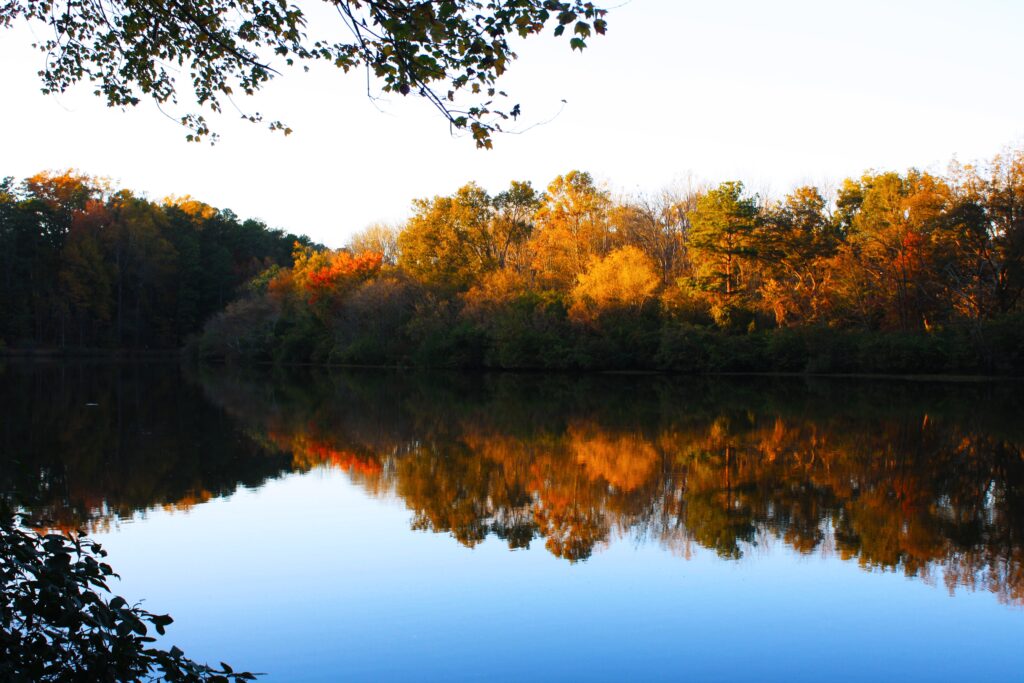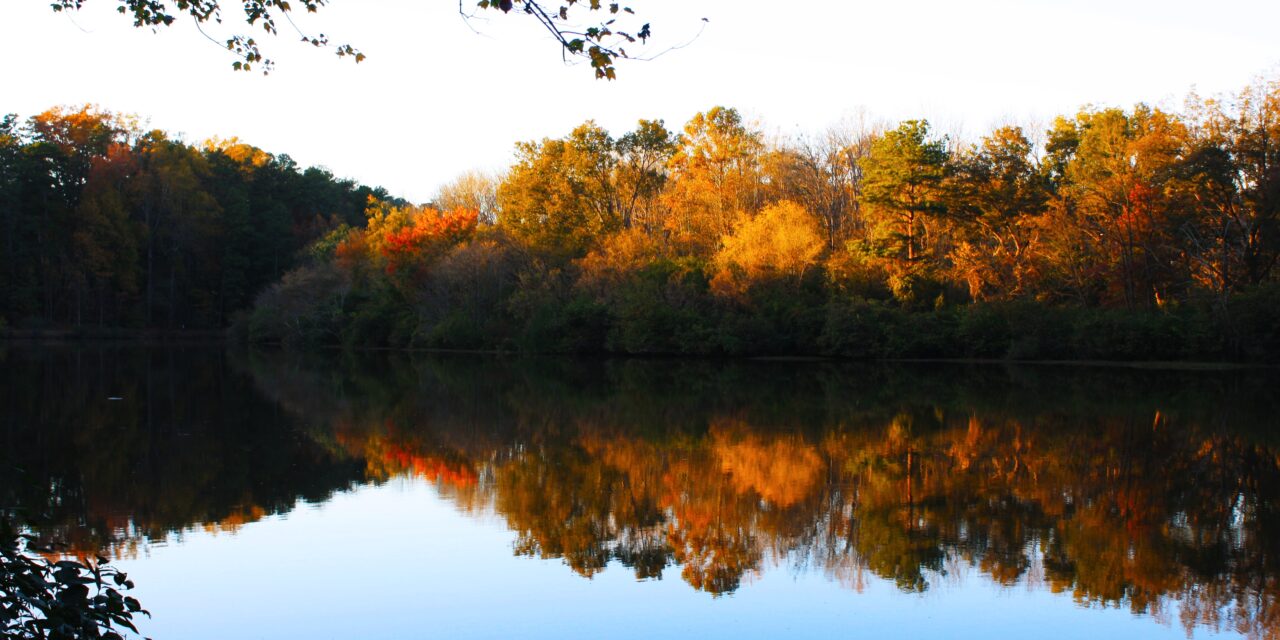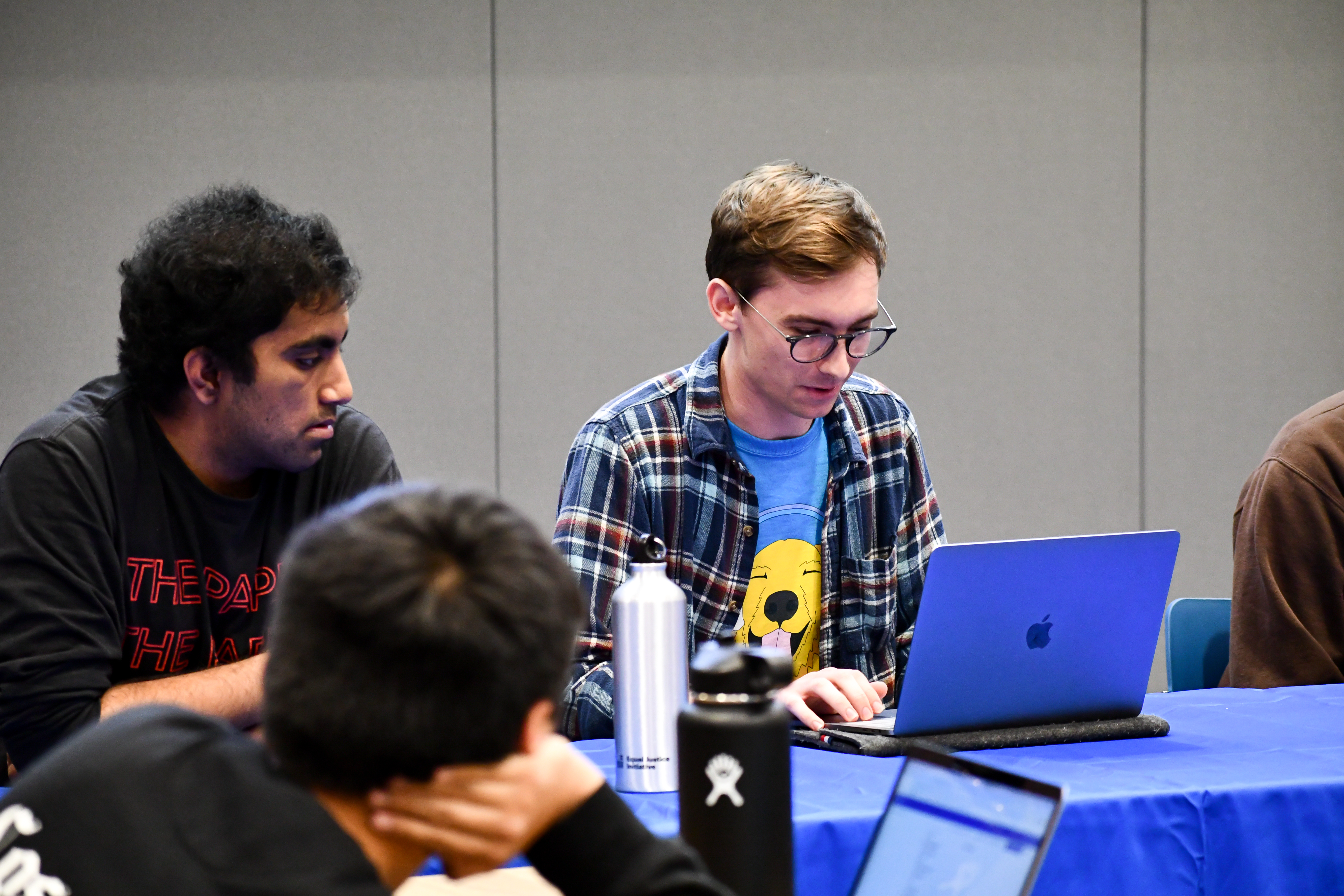The Emory University Senate voted on Tuesday to send a request to University President Gregory Fenves for more transparency about the potential construction of a 10-foot wide cement path along South Fork Peachtree Creek. DeKalb County, the PATH Foundation and Emory University’s Office of Master Planning jointly proposed the path, which would cut through forest on the south bank. The vote passed by an 86% margin, according to University Senate President and Associate Professor of Anthropology Alicia DeNicola.
The Senate request recommended that the administration engage in a “transparent and holistic decision-making process” that considers University values, policies and data, DeNicola said. This would include articulating the objectives that the University hopes to achieve through this project, as well as offering general alternatives and an assessment of trade-offs.
During Tuesday’s meeting, Assistant Teaching Professor of Environmental Science Carolyn Keogh (07C), who chairs the Senate Committee on the Environment, proposed the idea that the University should consider branching off of an existing path under Clairmont Road and utilizing existing gravel to go through Lullwater, instead of building an entirely new path.
“This is just one example of an alternative that could be explored that would have significantly lower ecological trade-offs and that we would like to see this kind of consideration in the decision-making process for this project,” Keogh said.
Additionally, the Student Government Association (SGA) unanimously voted 9-0 to support a resolution sponsored by Emory Ecological Society Vice President and Founder Nick Chang (24C) and Emory Bike Social President Alison Thieberg (25C) on March 26. The resolution, which stated that the path would cut through “irreplaceable old-growth forest,” recommended that the Path project leaders consult with the Muscogee (Creek) Nation to ensure that the proposal accounts for “cultural and traditional ecological significance” of the land. Additionally, SGA requested that Emory’s Master Planning Office add a “Muscogee Traditional Ecological Knowledge holder, a student cyclist and a student ecologist” to the PATH Foundation’s stakeholder advisory task force.
SGA also proposed that Emory adopt conservation efforts to protect forests from similar proposals in the future. The proposal also recommended that University leaders prioritize this PATH proposal and sustainable commute alternatives.
The resolution also recommends that the University “engage more holistically” with students more when considering the path.
“It’s a good opportunity to increase conversations around ecological preservation, around the Emory community and building a sustainable future,” SGA President Khegan Meyers said (24B). “That’s something that I think is a priority for a lot of undergraduate students.”
The exact route of the path has yet to be determined, according to Assistant Vice President of University Communications and Marketing Laura Diamond.
Proponents of the path
At a March 20 SGA meeting, Associate Vice President for Planning and Engagement David Payne discussed the path and answered student questions in an attempt to gain their support.
The University is considering how to mitigate the environmental impact of the trail, Payne said at the meeting, adding that the new path would have barriers to guide people along the trail and prevent them from continuing to damage the environment.
According to Payne, the U.S. Environmental Protection Agency (EPA) told DeKalb County that the sewers in Lullwater have been overflowing into county creeks and need to be fixed. Thus, the county put a “seal” on the sewer line and cut down 20 to 30 “swaths” of trees on Emory’s campus to access the soil.
“We can argue about how much sensitivity they gave to the campus when they came in, but they did it for environmental reasons from the EPA,” Payne said.
The path’s construction would extend the network and allow DeKalb County to regularly repair sewers, Payne said.
PATH Senior Transportation Planner Eric Ganther said the path’s organizers hope to have the trail feasibility study, which will determine where the path will be built and the funds needed to complete it, completed in the second half of 2023. After the study is completed, DeKalb County and Emory administration will decide if the project will move forward.
Ganther wrote that because Emory owns a high percentage of the land in the feasibility study area, the University will be a key stakeholder in planning the path.
“It would connect thousands of Emory faculty, staff and students who live within one mile of the trail and allow them to walk or bike to campus with ease,” Diamond wrote. “Bicyclists have told Emory in the past that safe bicycling is their primary concern, and this new trail would promote sustainable commuting by bicycle with almost no interaction with vehicles.”
Payne also added that the proposed path would provide environmental benefits, including allowing Emory to restore streambanks, replant trees that were recently cut down, remove invasive species and restore the forest.
“There’s a great opportunity here along the trail to look at educational opportunities,” Payne said. “We could do QR codes, for example, that would have information about the natural habitats along the trail that people would not be able to see today, the history of Emory along the trail and the history of populations that predate every point.”

Lullwater preserve is a 154 acre preserve that resides in the heart of Emory’s campus. Courtesy of Wikimedia Commons
Environmental concerns
Emory Ecological Society published a joint statement on Feb. 25 along with nine other student organizations on Instagram. The coalition of organizations urged Emory, DeKalb County and the PATH Foundation to carefully consider the proposed path’s environmental impact.
“Our understanding of the current proposal is that it does not address commuter safety issues or increase commuter access to campus,” the statement reads. “Instead, it would establish a recreational trail at the cost of old-growth forest, watershed health, impacts on two rare species, and Emory’s own environmental commitments.”
Emory Spokes Council President Ruth Hallstead (24T) wrote in an email to the Wheel that her organization signed the joint statement because the proposed path would be “detrimental to the environment” and would not increase the number of people who bike to work.
Emory Bike Social, a group dedicated to promoting cycling at Emory, conducted a survey that found that 59.5% of respondents who bike to work said they will not use the proposed path in their commute and under 10% of respondents would use the proposed path recreationally.
According to Associate Teaching Professor of Environmental Science John Wegner, the PATH Foundation has attempted to build this path on Emory’s property for the last 20 years. However, Wegner is concerned that the path will destroy some of Lullwater’s wildlife.
Lullwater has the largest population of starvine in the world, Wegner said. The preserve is also home to the Chattahoochee crayfish, which is a threatened species. The crayfish was found in Lullwater in 2021 after not being documented in DeKalb County since 1969.
“Because of the way Georgia’s environmental regulations work, there are no real protections for these species on private land, like Emory’s property,” Chang said. “We are concerned that the construction of the path would not only pave over a patch of starvine, but also that it would further degrade water quality in South Fork Peachtree Creek and eliminate the Chattahoochee Crayfish from our campus.”
Furthermore, the paved path could go through Wesley Woods, which Wegner explained is an ecologically sensitive area of Lullwater. Wegner said he refrains from bringing his environmental science classes to Wesley Woods because students could destroy native habitats.
Wegner is also concerned that multiple areas of Lullwater’s stream banks are collapsing. Chang said that deterioration of the stream banks has also caused extensive sediment erosion and degradation of water quality. He added that building the proposed path on the north side of Lullwater’s creek would increase runoff, ultimately reducing water quality and harming the survival of the rare crayfish species.
Additionally, laying new pavement for the path would create an edge effect — a phenomenon where two different types of habitats meet — because the concrete path would create a different environment than the typical forest, Wegner said. He explained that the edge effect creates a very basic environment of grass and soil in between the concrete and the rest of the forest that attracts non-native species, which can disturb the ecosystem.
Diamond wrote that while a “small number” of students have voiced concerns, groups such as the Graduate Student Government Association support building the path and Emory is working with environmental groups to ensure their concerns are taken seriously.
“We believe that DeKalb’s offer to develop a trail that will support sustainable commuting, safe recreational paths and educational opportunities for the Emory community is one worth exploring,” Diamond wrote.
Correction (4/1/23 at 12:20 a.m.): A previous version of this article stated that the starvine was found in Lullwater in 2021 after not being documented in DeKalb County since 1969. In fact, it is actually the Chattahoochee crayfish that was not documented in DeKalb County since 1969.
Spencer Friedland (26C) is from Long Island, New York and is the Emory Wheel's Managing News Editor. He is a Philosophy, Politics and Law major and has a secondary major in Film. Spencer is also a part of the Franklin Fellows program at Emory.





